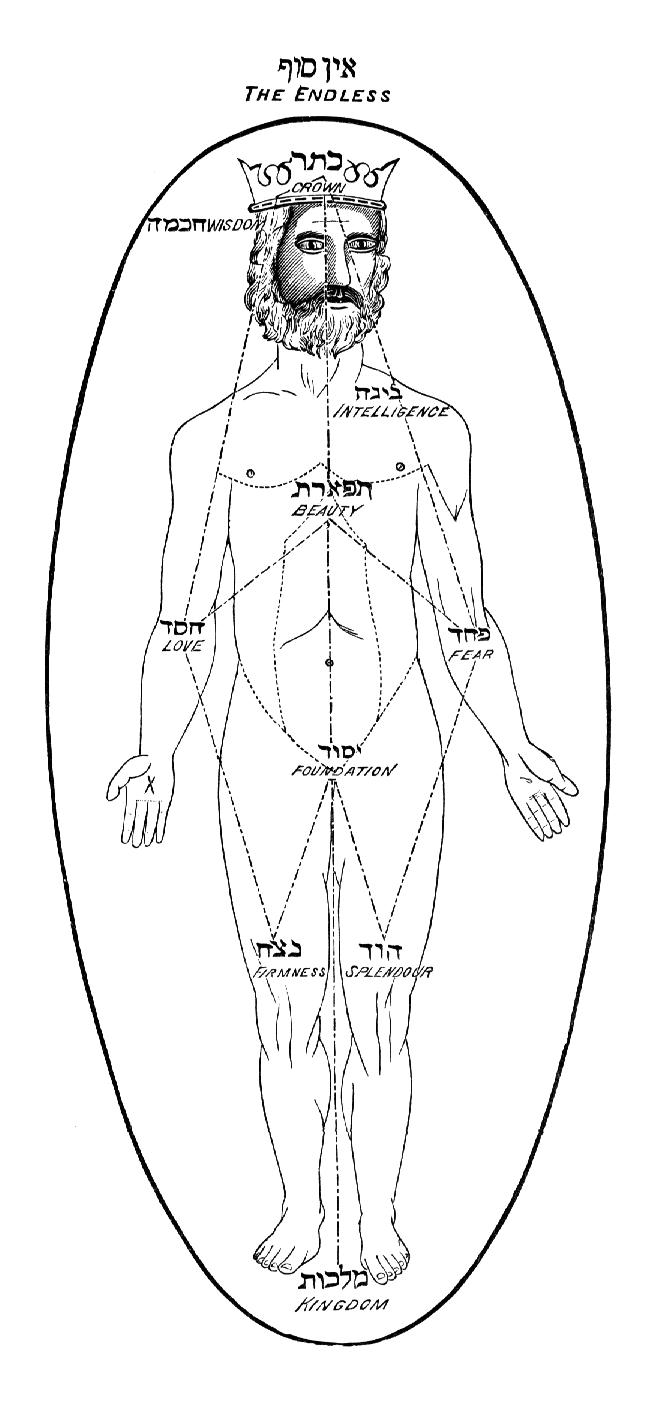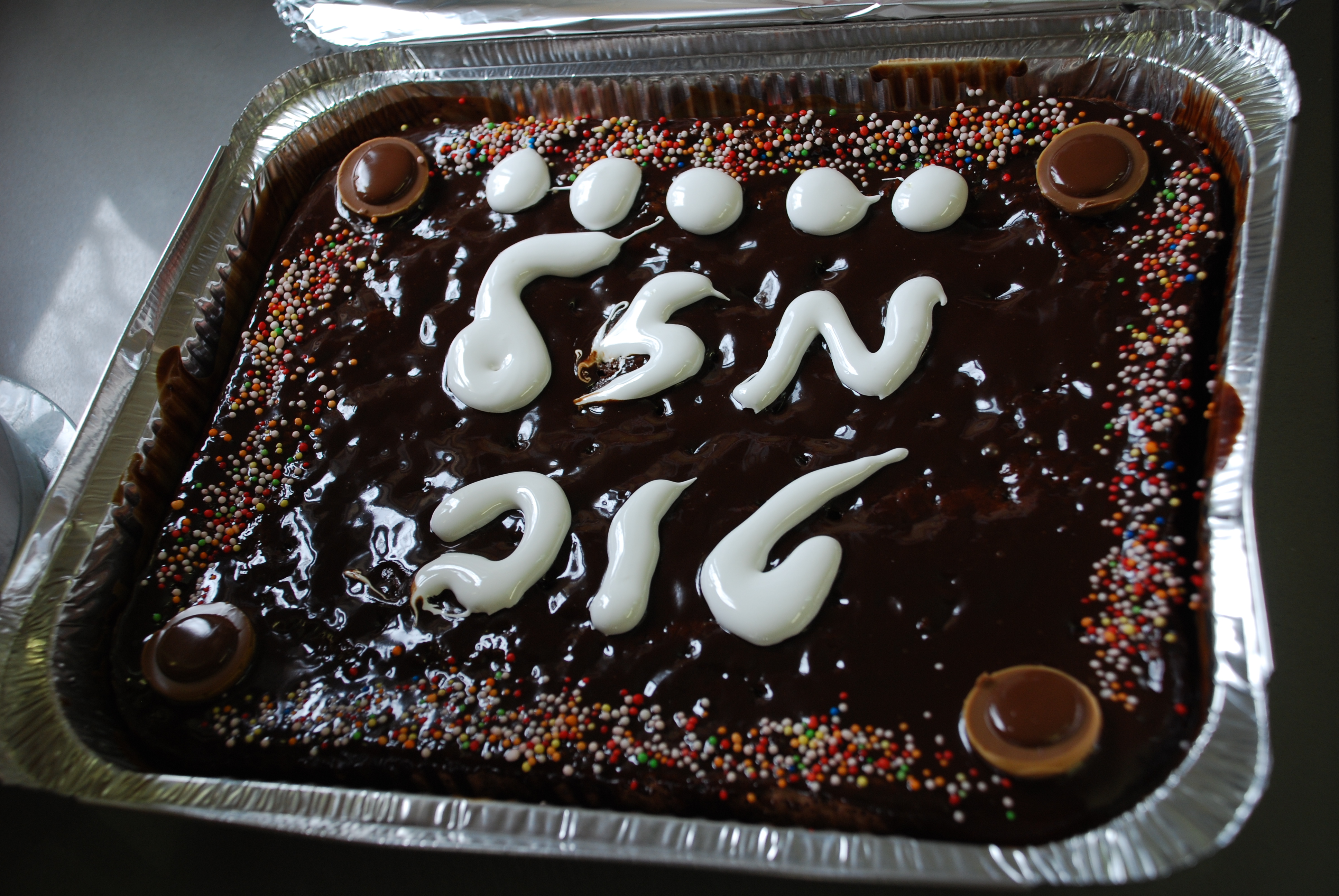|
Kochos Hanefesh
Kochos/Kochot haNefesh ( from nephesh-"soul"), meaning "Powers of the Soul", are the innate constituent character-aspects within the soul, in Hasidic thought's psychological internalisation of Kabbalah. They derive from the 10 Sephirot Heavenly emanations of Kabbalah, by relating each quality to its parallel internal motivation in man. The Hasidic discussion of the sephirot, particularly in the Kabbalistically oriented system of Habad thought, focuses principally on the Soul Powers, the experience of the sephirot in Jewish worship. Among the soul powers, Bittul (Human "self-nullification" of ego), the first revealed power, turns the ''Ani''-"Self" into ''Ayin''-"Nothingness" in the contemplative preparation for experiencing the Divine "Ayin" nullification of Existence. In the elite ideal of Deveikut-" cleaving" to God, the central Hasidic principle in its reinterpretation of Judaism, this inspires the subsequent powers of expression. In Mainstream "Practical Tzadikism", this eli ... [...More Info...] [...Related Items...] OR: [Wikipedia] [Google] [Baidu] |
Binah (Kabbalah)
Binah (meaning "understanding"; ''Bīnā'') is the third '' sephira'' on the kabbalistic Tree of Life. It sits on the level below Keter (in the formulations that include that ''sephirah''), across from Chokmah and directly above Gevurah. It is usually given four paths: from Keter, Chokmah, to Gevurah and Tiphereth. Etymology and names Binah (בִּינָה), meaning "understanding" in Hebrew, is derived from the root ב-י-נ, which conveys the concept of discerning or distinguishing knowledge into structured understanding. This root implies building or constructing insight from raw data. In Kabbalistic tradition, Binah is personified as a nurturing mother, reflecting its role in developing and shaping the abstract wisdom from Chokmah into intelligible forms. History The concept of Binah has its roots in early Jewish mystical texts, such as the ''Sefer Yetzirah'', which dates between the 2nd and 6th centuries CE. In this foundational work, Binah is associated with the s ... [...More Info...] [...Related Items...] OR: [Wikipedia] [Google] [Baidu] |
Adam Kadmon
In Kabbalah, Adam Kadmon (, ''ʾāḏām qaḏmōn'', "Primordial Man") also called Adam Elyon (, ''ʾāḏām ʿelyōn'', "Most High Man"), or Adam Ila'ah (, ''ʾāḏām ʿīllāʾā'' "Most High Adam" in Aramaic), sometimes abbreviated as A"K (, ''ʾA.Q.''), is the first of Four Worlds that came into being after the contraction of God's infinite light. ''Adam Kadmon'' is not the same as the physical ''Adam Ha-Rishon'' (אָדָם הָרִאשׁוֹן). In Lurianic Kabbalah, the description of ''Adam Kadmon'' is anthropomorphic. Nonetheless, ''Adam Kadmon'' is divine light without vessels, i.e., pure potential. In the human psyche, ''Adam Kadmon'' corresponds to the yechidah, the collective essence of the soul. In Judaism Philo The first to use the expression "original man," or "heavenly man," was Philo, in whose view this or , "as being born in the image of God, has no participation in any corruptible or earthlike essence; whereas the earthly man is made of loose ... [...More Info...] [...Related Items...] OR: [Wikipedia] [Google] [Baidu] |
Four Worlds
The Four Worlds ( ''ʿOlāmot'', singular: ''ʿOlām'' ), sometimes counted with a primordial world, Adam Kadmon, and called the Five Worlds, are the comprehensive categories of spiritual realms in Kabbalah in a descending chain of existence. The concept of "Worlds" denotes the emanation of creative lifeforce from the Ein Sof or Godhead through progressive, innumerable tzimtzumim or concealments. Kabbalists identified the names of these worlds from Isaiah 43:7, "All who are linked to My name, Whom I have ''created'', ''Formed'', and ''made'' for ''My glory'' ()". The names are thus Beri'ah "Creation," Yetzirah "Formation," Assiah "Action," and Atziluth "Emanation." Below Assiah, the lowest spiritual world, is the ''Assiah gashmi'' "Physical Assiah," the physical universe, which enclothes the last two sefirot, Yesod and Malkuth. Collectively, the Four Worlds are referred to as Aviyaʿ after their initial letters. In addition to the functional role each world has ... [...More Info...] [...Related Items...] OR: [Wikipedia] [Google] [Baidu] |
Sefer Yetzirah
''Sefer Yetzirah'' ( ''Sēp̄er Yəṣīrā'', ''Book of Formation'', or ''Book of Creation'') is a work of Jewish mysticism. Early commentaries, such as the ''Kuzari'', treated it as a treatise on mathematical and linguistic theory, as opposed to one about Kabbalah. The word ''Yetzirah'' is more literally translated as "Formation"; the word ''B'riah'' is used for "Creation". The book is traditionally ascribed to the patriarch Abraham, although others attribute its writing to Rabbi Akiva or Adam. Modern scholars have not reached consensus on the question of its origins. According to Saadia Gaon, the objective of the book's author was to convey in writing how the things of our universe came into existence. Conversely, Judah Halevi asserts that the main objective of the book, with its various examples, is to give humans the means to understand the unity and omnipotence of God, which appear multiform on the one hand, and yet, are uniform. The famous opening words of the book are as f ... [...More Info...] [...Related Items...] OR: [Wikipedia] [Google] [Baidu] |
Atzmut
''Atzmus'' or ''Atzmut'' ( from the Hebrew language, Hebrew ''etzem'') is the descriptive term referred to in Kabbalah, and explored in Hasidic thought, for the God in Judaism, divine essence. Classical Kabbalah predominantly refers to the Godhead (Judaism), Godhead in Judaism with its designated term "Ein Sof" ("No end"-Infinite). Reference to ''atzmus'' is usually restricted in Kabbalistic theory to discussion whether "Ein Sof" represents the ultimate divine being in itself, or to God as first cause of creation. Background Perceptions of God in Jewish philosophy and Kabbalah Medieval Jewish philosophy, Jewish philosophers like Maimonides, articulate a Divine transcendence, transcendent negative theology where it is only possible to describe God in Judaism, God in terms of what He is not. Here Divine Unity means that God's singularity is unique and bears no relation to any concept one can conceive. Kabbalah, influenced by the philosophical argument, but seeking the Biblic ... [...More Info...] [...Related Items...] OR: [Wikipedia] [Google] [Baidu] |
Mazal
"Mazel tov" () or "mazal tov" (; lit. "good fortune") is a Jewish phrase used to express congratulations for a happy and significant occasion or event. Etymology and pronunciation The word ''mazel'' comes from the Biblical Hebrew , meaning "constellation" or (in Mishnaic Hebrew) "astrological sign" and may be related to the root meaning "to flow down". The phrase ''mazel tov'' first appears in Geonic Hebrew, where it means "positive astrological sign" or simply "good fortune." The Medieval Hebrew chant "A good sign, a good omen! Let it happen for us and for all Israel" was used to congratulate, and the phrase itself acquired a congratulatory usage in Yiddish and Hebrew by the early 19th century and was later incorporated into Modern Hebrew. The Yiddish and Ashkenazic Ashkenazi Jews ( ; also known as Ashkenazic Jews or Ashkenazim) form a distinct subgroup of the Jewish diaspora, that emerged in the Holy Roman Empire around the end of the first millennium CE. The ... [...More Info...] [...Related Items...] OR: [Wikipedia] [Google] [Baidu] |
Malchut
Malkuth (; "kingdom"; Ashkenazi: ''Malkhus'' ), Malkhut, Malkhuth, or Malchus, is the tenth of the sefirot in the Kabbalistic Tree of Life. Description In the ''Zohar'', an important Kabbalistic text from late al-Andalus, Malkuth sits at the bottom of the Tree of Life below Yesod and "governs the simple fact of existence in the physical world"; it is also known as Shekhinah. " e central teaching of the Zohar coalesced around an anthropomorphic model, in which the sefirot represent a cosmic anthropos. The lower sefirot, Malkhut, Yesod, Hod, and Nezah, constitute the most physical dimension of life, the nefesh." Unlike the other nine sephirot, it is an attribute of God which does not emanate from God directly. Rather it emanates from God's creation—when that creation reflects and evinces God's glory from within itself. In Western esotericism Malkuth means Kingdom. It is associated with the realm of matter/earth and relates to the physical world, the planets and the Solar ... [...More Info...] [...Related Items...] OR: [Wikipedia] [Google] [Baidu] |
Yesod
Yesod (Hebrew: יְסוֹד ''Yəsōḏ'', Tiberian: ''Yăsōḏ'', "foundation") is a sephirah or node in the kabbalistic Tree of Life, a system of Jewish philosophy. Yesod, located near the base of the Tree, is the sephirah below Hod and Netzach, and above Malkuth (the kingdom). It is seen as a vehicle allowing movement from one thing or condition to another (the power of connection). Yesod, Kabbalah, and the Tree of Life are Jewish concepts adopted by various philosophical systems including Christianity, New Age Eastern-based mysticism, and Western esoteric practices. Jewish Kabbalah According to Jewish Kabbalah, Yesod is the foundation upon which God has built the world. It also serves as a transmitter between the sephirot above, and the reality below. The light of the upper sephirot gather in Yesod and are channelled to Malkuth below. In this manner, Yesod is associated with the sexual organs. The masculine Yesod collects the vital forces of the sephirot above, and ... [...More Info...] [...Related Items...] OR: [Wikipedia] [Google] [Baidu] |
Hod (Kabbalah)
Hod (Hebrew ''Hōḏ,'' lit. 'majesty, splendour, glory') Apparently by aphaeresis from ''nehod'' from the root ''n-h-d'' "to lift oneself up, to become lofty". Gesenius, ''Hebrew Lexicon'' ( Strong'sbr>H1935. is the eighth sephira of the Kabbalistic Tree of Life. It is positioned on the left side of the tree beneath Gevurah (severity) and directly opposite Netzach (eternity). Hod is associated with qualities such as submission, humility, and intellectual rigor. It represents the capacity to comprehend and articulate divine truths, balancing the emotive and instinctual energies of Netzach. This balance is crucial for maintaining the flow of divine energy through the sefirot and manifesting it in the material world. Hod is also linked to the planet Mercury and the archangel Michael in Western esoteric traditions. Description Hod sits below Gevurah and across from Netzach in the tree of life; Yesod is to the south-east of Hod. It has four paths, which lead to Gev ... [...More Info...] [...Related Items...] OR: [Wikipedia] [Google] [Baidu] |
Netzach
Netzach () is the seventh of the ten sefirot in the Jewish mystical system of Kabbalah. It is located beneath Chesed ('loving-kindness'), at the base of the "Pillar of Mercy" which also consists of Chokmah ('wisdom'). Netzach generally translates to 'eternity', and in the context of Kabbalah refers to 'victory' (literal meaning), 'perpetuity', or 'endurance'. Within the Sefiroth, Netzach sits geometrically across from Hod. Netzach is "endurance," the fortitude, and patience to follow through on passions. It is paired with Hod as the righteous attributes related to group interactivity, with Netzach being leadership, the ability to rally others to a cause and motivate them to act; while Hod is community, the ability to do the footwork needed to follow through on ideas and make them happen. Netzach is identified with the right (left leg or foot) when the tree of life is portrayed on the human form, while Hod is on the left (right leg or foot). The angelic order of Netzach is t ... [...More Info...] [...Related Items...] OR: [Wikipedia] [Google] [Baidu] |
Tiferet
Tiferet ( ''Tip̄ʾereṯ,'' in pausa: תִּפְאָרֶת ''Tip̄ʾāreṯ'', lit. 'beauty, glory, adornment') alternatively Tifaret, Tiphareth, Tifereth or Tiphereth, is the sixth sefira in the kabbalistic Tree of Life. It has the common association of "Spirituality", "Balance", " Integration", "Beauty", "Miracles", and "Compassion". Description In the Bahir it states: "Sixth is the adorned, glorious, delightful throne of glory, the house of the world to come. Its place is engraved in wisdom as it says 'God said: Let there be light, and there was light.'" Arthur Green. ''A guide to the Zohar'' Tiferet is the force that integrates the sefira of Chesed ("Kindness") and Gevurah ("Strength", also called Din, "Judgement"). These two forces are, respectively, expansive (giving) and restrictive (receiving). Either of them without the other could not manifest the flow of Divine energy; they must be balanced in perfect proportion by balancing compassion with discipline. This balan ... [...More Info...] [...Related Items...] OR: [Wikipedia] [Google] [Baidu] |




